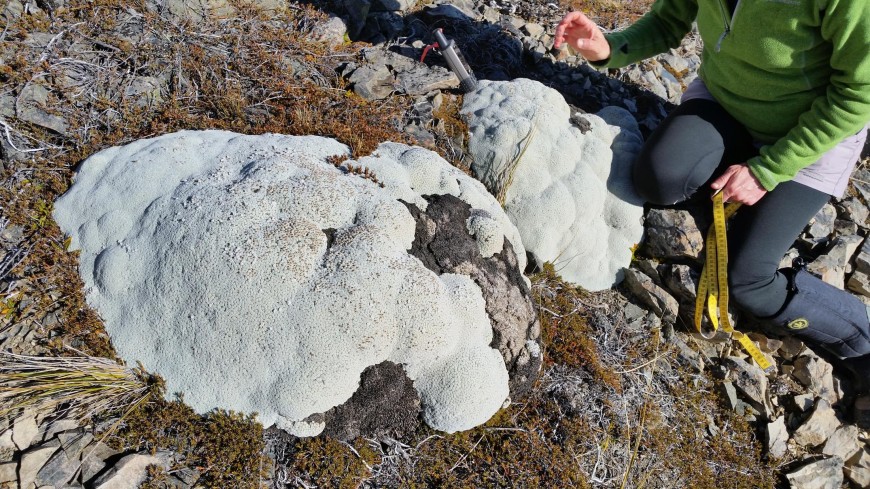Variability in Herbivory Shows Patterns, and it Matters
This was no small feat! The group designed a survey protocol that would be simple enough so that it could be replicated consistently by researchers around the world, yet informative and flexible enough to accommodate a variety of field situations that are different from the ‘ideal standard’ plant population.
Early in 2020 Manaaki Whenua scientist Quentin Paynter was contacted by the Michigan researchers and invited to take part in this global initiative to represent New Zealand flora. “When I first read the study hypotheses and design, I could immediately see that these research questions would be useful for us to understand on a global scale, and that they would have implications for weed biocontrol,” said Quentin. “Herbivory puts selection pressure on plants and how their defence mechanisms evolve, which is important for host specificity. Understanding patterns of variability in herbivory can potentially help us improve our predictions about biocontrol agent effectiveness,” he added.

Surveying vegetable sheep.
Quentin joined forces with colleague Ronny Groenteman, and together they planned a survey to represent New Zealand in what became the Herbivory Variability Network (HerbVar for short). “Although we think about weeds for most of our working day, we had to instead think about indigenous plants for this survey, because we were looking for natural patterns of herbivory,” said Ronny. “Our herbivorous biocontrol agents are operating in a simplified enemy-free environment in New Zealand, and this could skew the variability patterns they display. That is why we focused on native ecosystems,” she explained.
Each contributor was asked to survey at least five plant species according to the following hierarchical structure:
- at least one of the two focal species, the cosmopolitan dandelion (Taraxacum officinale) and broad-leaf plantain (Plantago major)
- at least one species (preferably more) belonging to at least one of the five focal plant families Apocynaceae, Asteraceae, Fabaceae, Rubiaceae, and Solanaceae
- any species that have not yet been sampled, preferably adding plant families that have not yet been sampled by other participants, and/or growth forms that have not yet been represented within the five focal plant families.
With our weird and wonderful New Zealand flora we were able to grant the survey a few funky representations, such as vegetable sheep (Raoulia eximia) and a tree daisy (Olearia paniculate). This last species was surveyed in collaboration with other researchers in the network, Lauren Walker (Ministry of Primary Industries) and Warwick Allen. Warwick has since joined the Ecosystems & Conservation Team here at Manaaki Whenua.
We timed our surveys for autumn to maximise the chances of capturing footprints of herbivory. The autumn of 2020 was a bit more eventful than we anticipated, and we did most of our surveys in the week following the first confirmed case of Covid in New Zealand. The walking tracks used to access our selected plant populations, which would have been tourist highways at any other time, were all but abandoned and almost eerie, and we completed the surveys 2 days before the country went into its first lockdown. Talk about timing!
All in all, 127 research teams in 34 countries surveyed a total of 790 plant populations covering 503 plant species from 135 plant families. Survey sites spanned 116° of latitude across North America, Central America, South America, Europe, Africa, Asia, Australia and, of course, New Zealand. The numbers of species and sites continue to grow, with further surveys being added to the data set for future analyses.
So, did this epic effort find any meaningful patterns? It did indeed. Variability in herbivory is not random. Variability in statistical terms refers to the divergence of data from the mean. While mean herbivory was lacking any patterns in the data set, the variability told a different story.
Variability in herbivory within plant populations increases with increasing latitude. Plants at higher latitudes receive less herbivory on average, and this herbivory is concentrated on fewer individuals. This means that further away from the equator, variability in herbivory is greater. The reasons for this could be shorter growing seasons and less stable abiotic conditions, which reduce the time available for herbivores to forage.
Image: Quentin Paynter and Aoife Neill carrying out survey work
This latitudinal pattern of herbivory variability could help explain how herbivores have influenced global patterns of plant biodiversity. These plant biodiversity patterns failed to be explained by examining mean herbivory alone, because mean herbivory only showed weak correlation with latitude. Closer to the equator herbivory may help maintain high plant biodiversity, not only by being more intense, but also by being more consistent. This pattern could explain why plants further away from the equator exhibit defence mechanisms that only become induced by actual herbivory, as opposed to constantly active defences observed in plants closer to the equator.
The current study suggests that mean plant size affects the variability of herbivory. Variability in herbivory within plant populations was higher among small plants compared to large plants. Growth form (i.e. tree vs climber vs grass, etc.) was less important than mean size for determining how variable herbivory was. In contrast, mean herbivory showed no correlation with either mean plant size or plant growth form.
One explanation for this pattern of variability could be that larger plants are less likely to escape being discovered by herbivores, whereas smaller plants are more likely to either escape herbivory completely or become decimated by a small number of herbivory events, resulting in high variability. One key implication of this pattern is that we could expect larger plant species (and larger life-stages within a species) to evolve more towards a higher concentration of defences that are always present. Conversely, smaller species and smaller life stages should exhibit a lower concentration of defences, which only become induced when herbivores attack.
Finally, the study found that variability in herbivory within plant populations is phylogenetically structured. This means that plant species that are more closely related display similar levels of variability in herbivory within populations. Again, no such relationship was detected between mean herbivory and phylogenetic relatedness. This finding suggests that mean herbivory changes relatively rapidly in response to plant traits that are liable to rapid evolutionary changes (e.g. plant chemical defences), whereas variability in herbivory is more strongly determined by traits that are phylogenetically conserved. Characteristics such as geographical location and plant size, which the study found relate to variability, tend to be less likely to change rapidly.
“This finding - that within-population variability in herbivory seems to be driven by conserved plant traits - tells us that this variability is biologically informative, and is not random noise,” concluded Quentin. “Understanding these patterns can inform weed target prioritisation as well as candidate agent prioritisation. For a start, we could look at existing weed biocontrol systems and compare patterns of variability in the native range compared to the introduced range. We could also start collecting data according to the HerbVar protocol for new weed targets as part of surveys in New Zealand and in the native range. Over time we expect these practices can improve our predictions and success rates.”
We also now have the advantage of being part of an international network of researchers who are all trained in the survey methods, who could contribute to an international effort to study herbivory on some of our weeds in their native range. Some species of interest may have already been surveyed at least once in the existing data set or can be made part of a branching add-on study, which the network encourages.
Funding
Quentin & Ronny’s participation in this study was part of MWLR’s Beating Weeds Programme, funded by the Ministry of Business, Innovation and Employment’s Strategic Science Investment Fund.
Key contact

